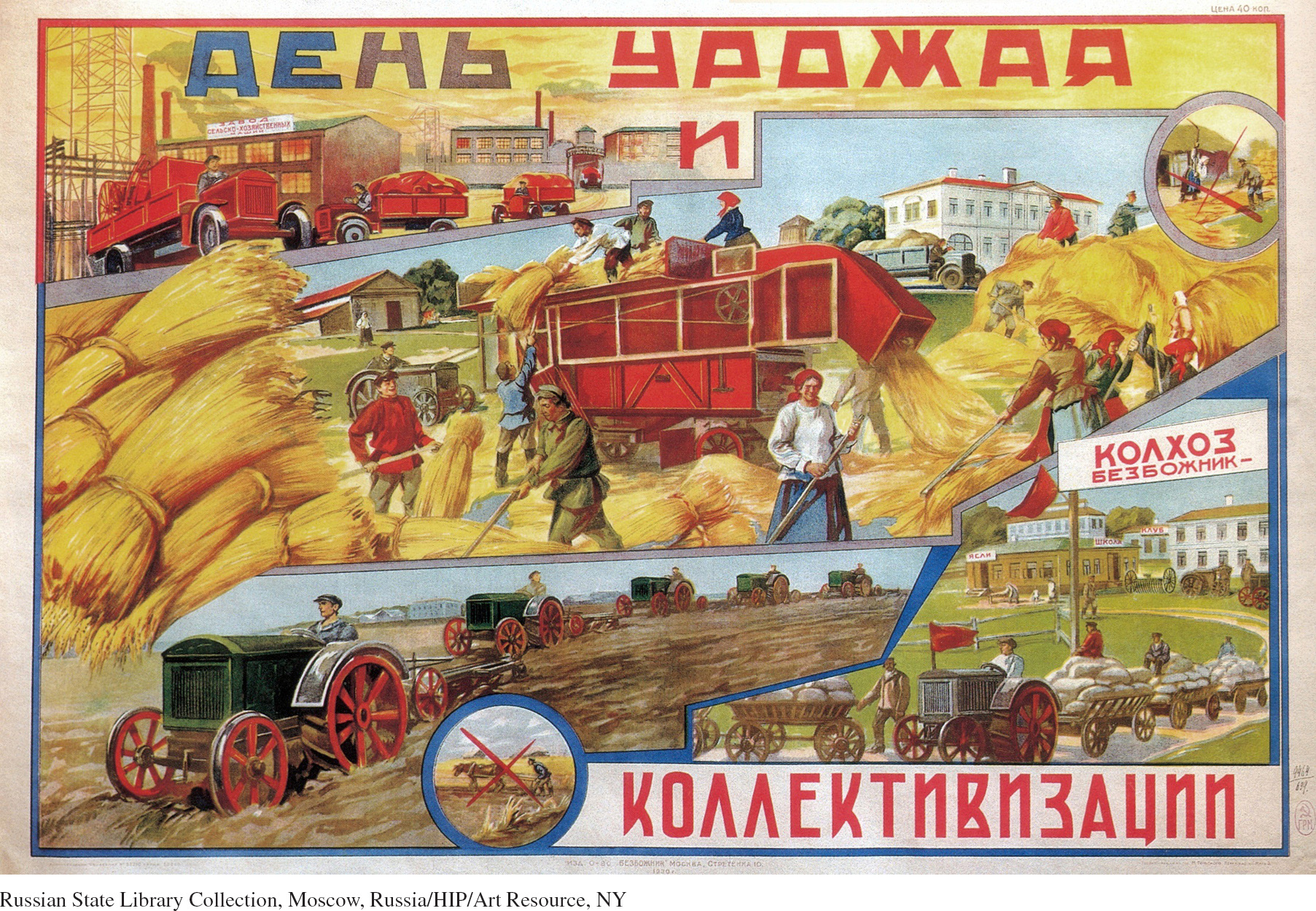Source 21.2
Collectivization: A Stalinist Vision
For Russian peasants, and those of other nationalities as well, the chief experience of Stalinism was collectivization — the enforced bringing together of many small-
In seeking to persuade reluctant peasants to join the new collective farms, such enthusiastic young party workers presented an attractive picture of the future. “Just look at yourself,” declared Kostia Lutkov, one of the organizers, to an audience of young villagers, “your coat is all torn; you’re wearing bast shoes [made from tree bark]; and your pants are made from sackcloth. Now in the collective farm, you could make some money, receive your grain ration, and even buy cologne for your evening get-
That hopeful and idealized vision of what socialist agriculture could become was expressed in Source 21.2, a Soviet poster from 1930, titled The Day of Harvest and Collectivization.
Questions to consider as you examine the sources:
- How would you describe that vision? How does it compare with the past represented by the two small circles with an “X”? What message about gender does the poster convey?
- In what ways does the poster reflect Stalin’s vision for the country as expressed in Source 21.1?
- The sign at the center right of the image reads “Collective Farm: Godless/Atheist.” What does this suggest about the official outlook of the Stalinist regime?
The Day of Harvest and Collectivization, 1930

Notes
- Maurice Hindus, Red Bread: Collectivization in a Russian Village (Bloomington: Indiana University Press, 1988), 1.
- Sheila Fitzpatrick and Yuri Slezkine, eds., In the Shadow of Revolution: Life Stories of Russian Women, from 1917 to the Second World War (Princeton, NJ: Princeton University Press, 2000), 237.